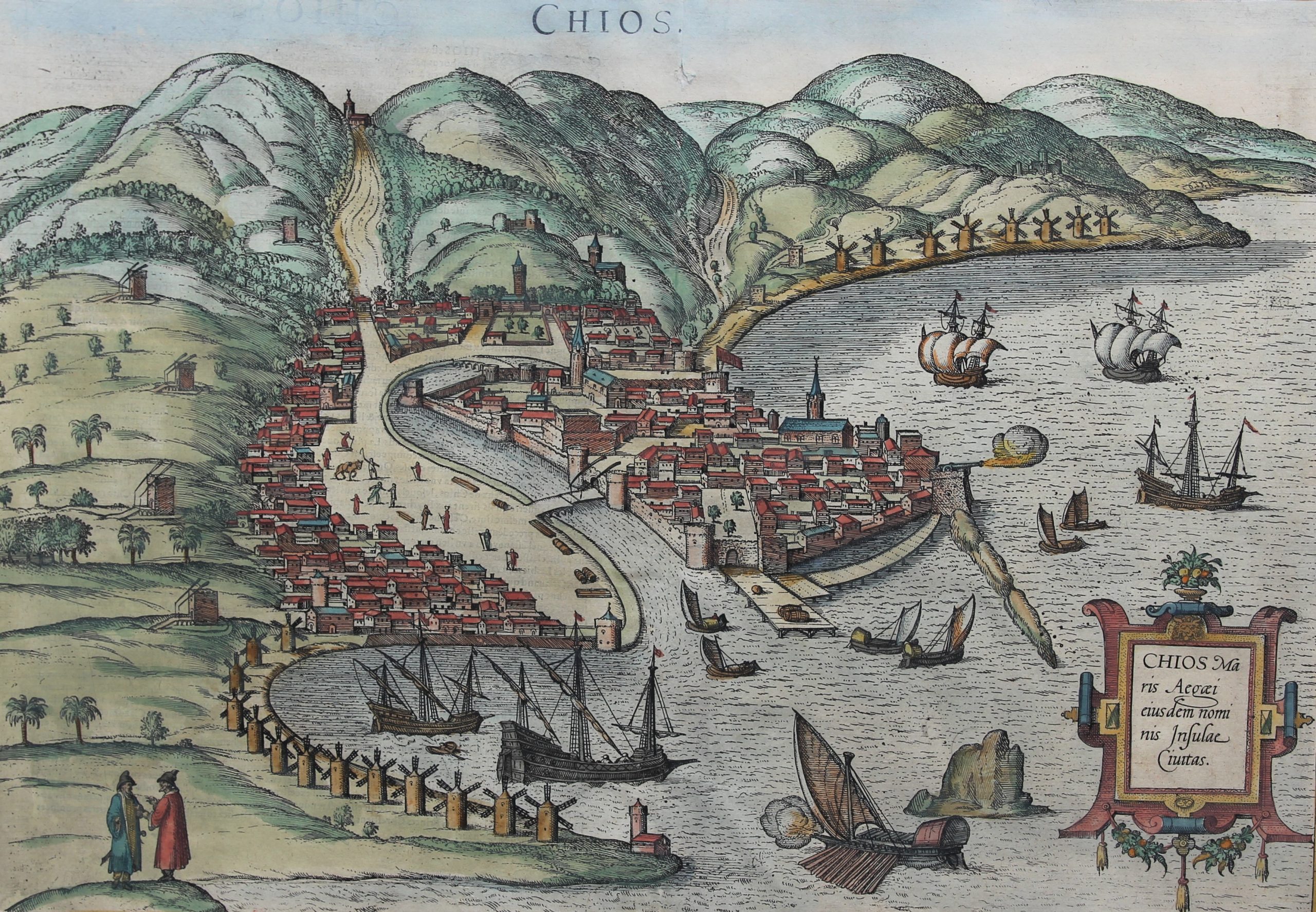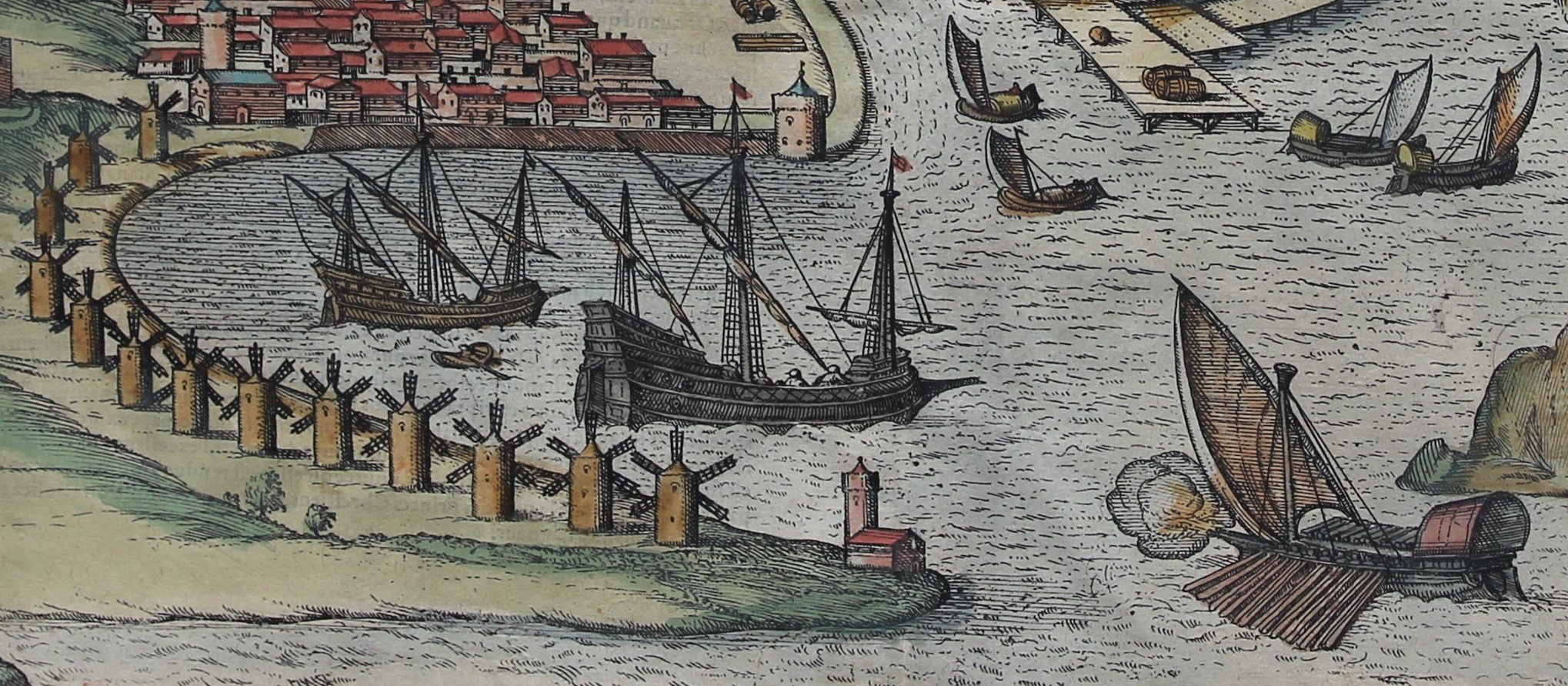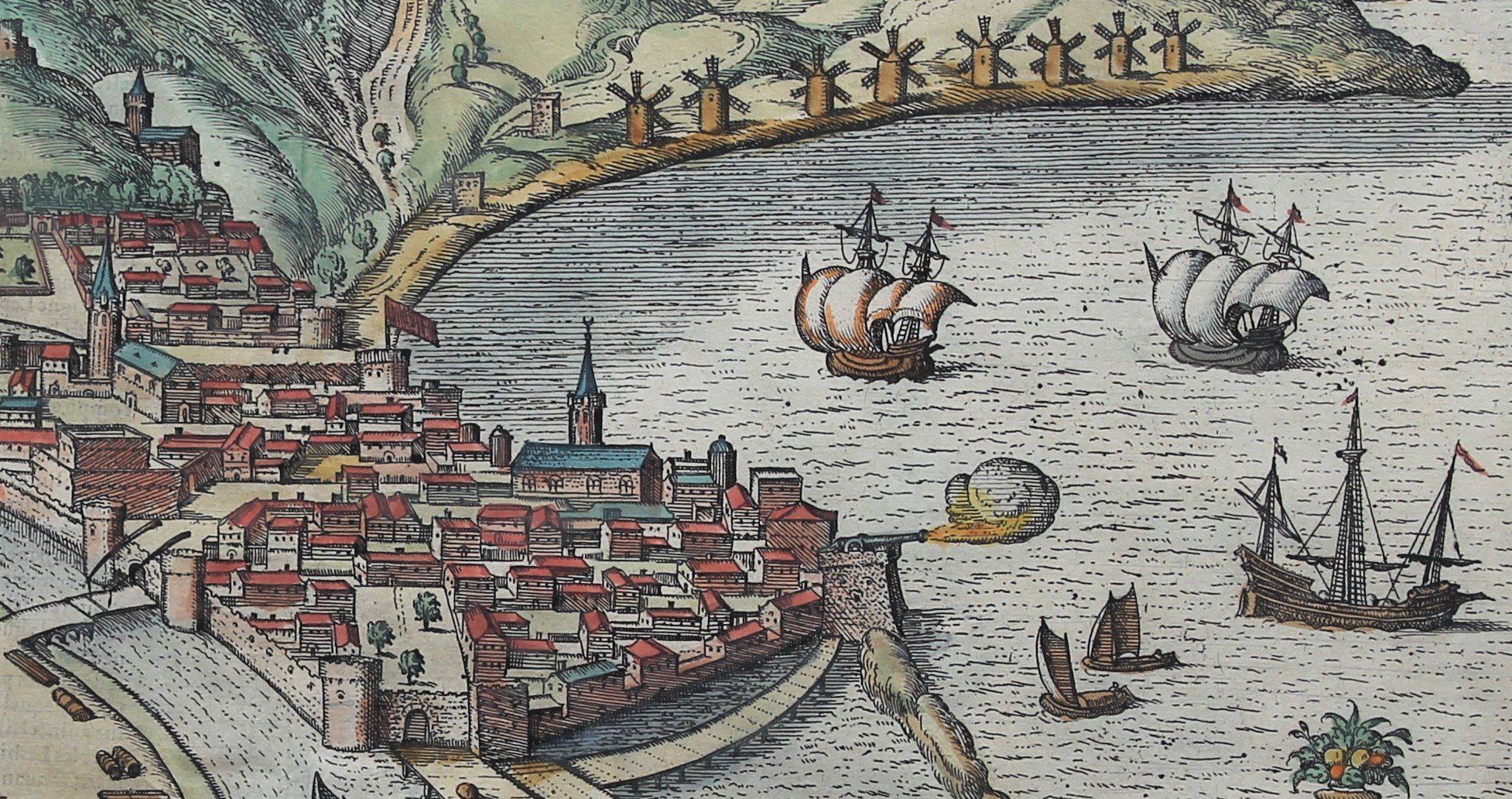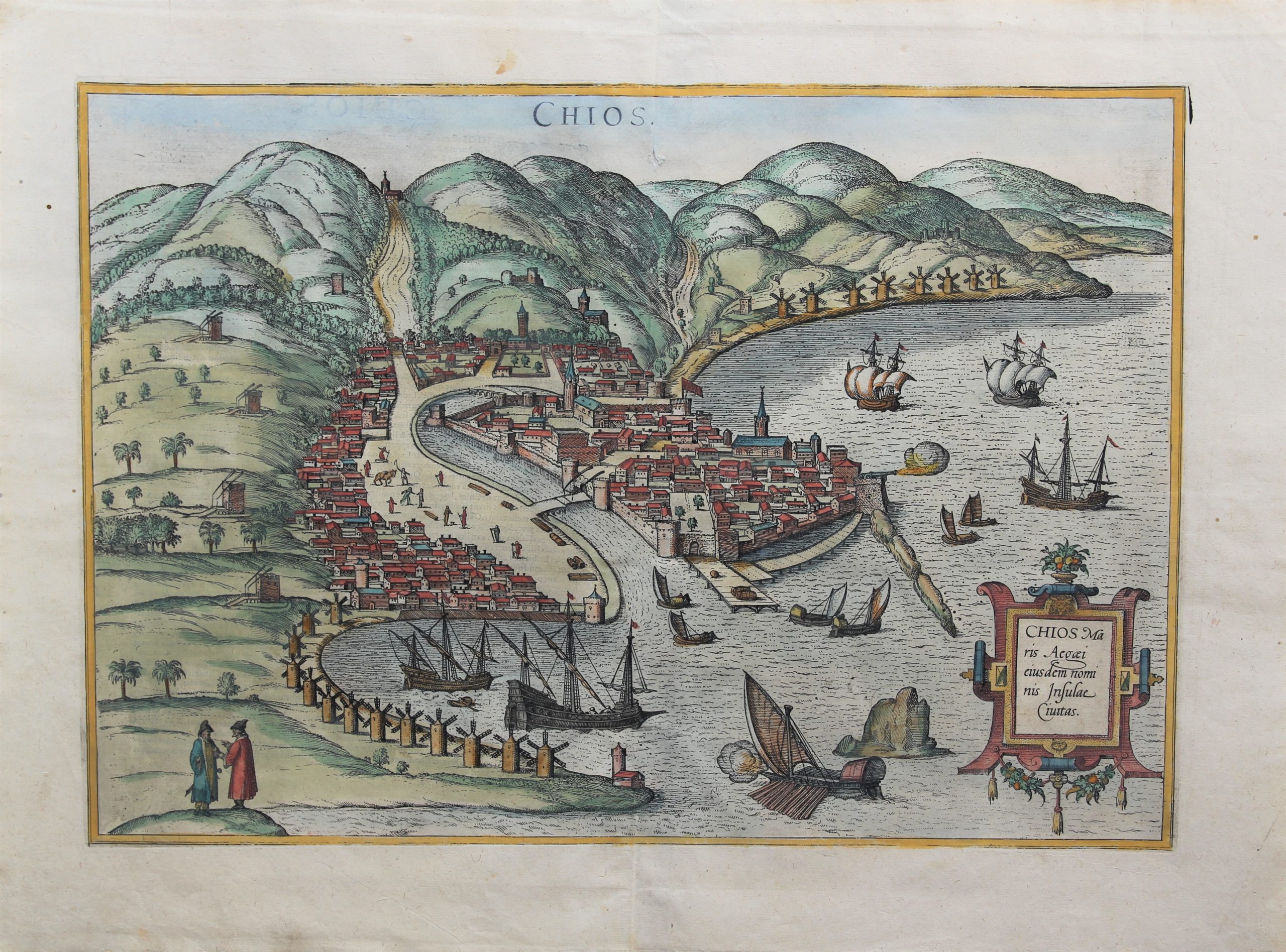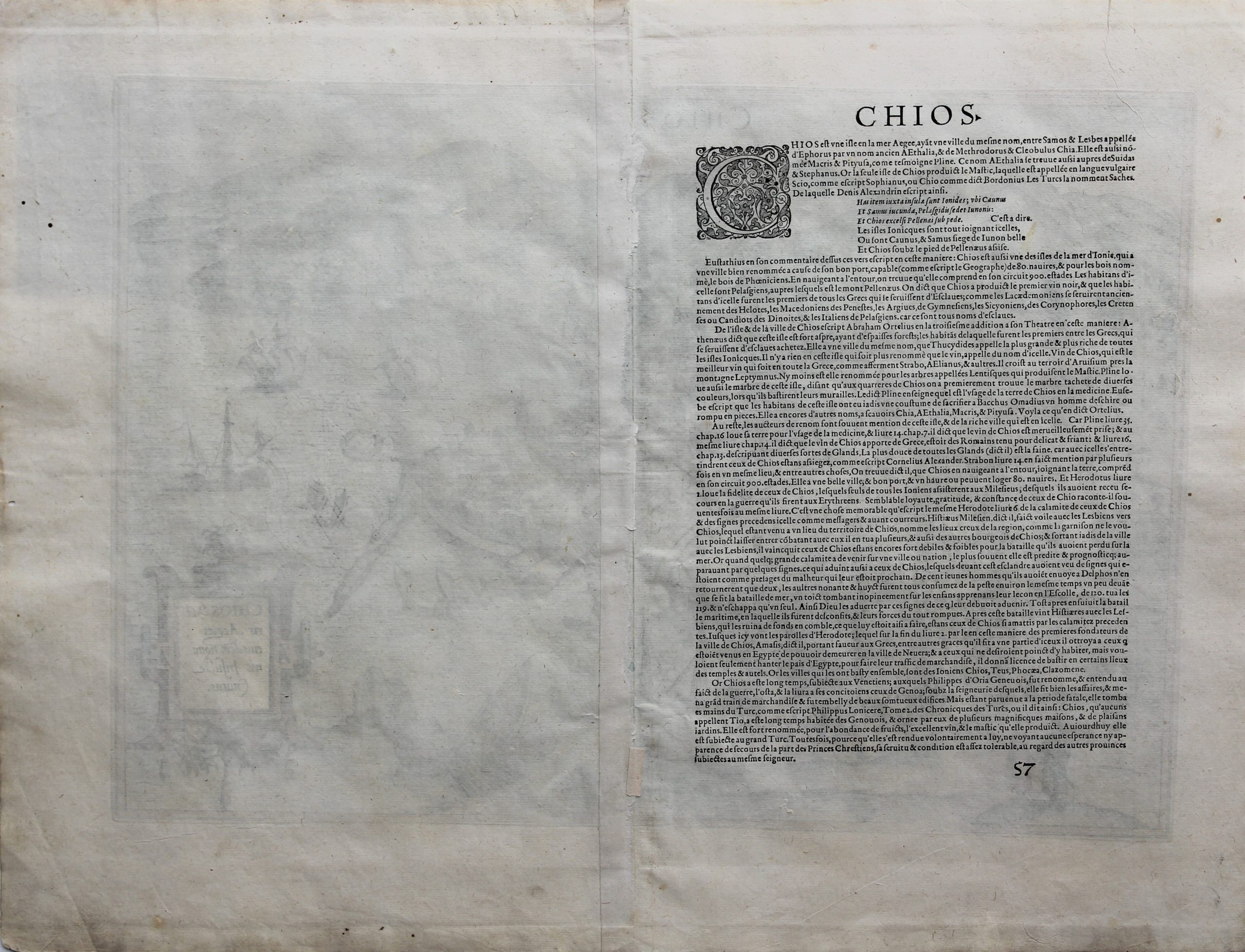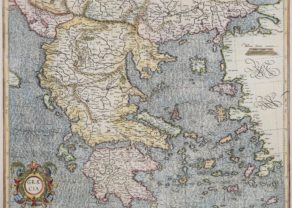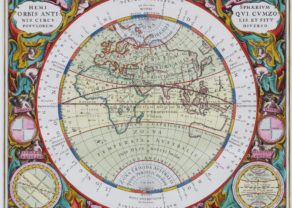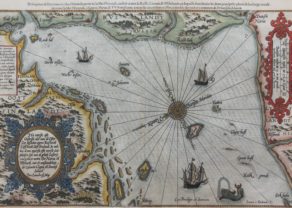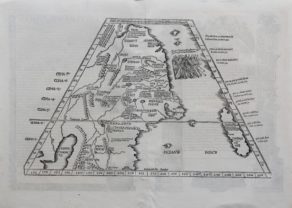Chios
Attractive bird’s-eye view of a lovely town
Detail
Date of first edition: 1588 (Latin edition)
Date of this map: 1595 (French edition)
Dimensions (not including margins): 32,3 x 45,8 cm
Dimensions (including margins): 41,8 x 55,2 cm
Condition: Strong image with lovely colors and wide margins with a few tiny wormholes in margins. Centre fold as published, with one small tear, professionally restored.
Verso: text in French
Map reference: Taschen, Br. Hog., p. 344; Van der Krogt IV, 2-1, 881
From: Théatre des Principales Villes de tout L’Univers, Vol. IV (Civitates Orbis Terrarum, Urbium Praecipuarum Totius Mundi, Liber Quartus), first edition 1588; Van der Krogt IV, 2-1, 41:1-3:French edition 1595: mention ’57’ with last line ‘subiectes… seigneur’
This item is sold
Chios commented by Braun
“Chios is one of the Ionian Islands, where there is a city that is renowned for its seaport […], which Thucydides calls the greatest and richest of all Ionian cities. There is nothing more famous on this island than the wine that bears its name: known as Chian wine, it is of all Greek wines the best, as both Strabo and Aelian confirm. […] The island is just as famous, however, for a tree called Lentiscus in Latin that is native to it and from which gum or resin drips, which is known as mastic.”
Title: Chios Maris Aegaei eiusdem nominis Insulae Civita. Translation of cartouche text: Chios, city on the eponymous island in the Aegean Sea.
Taschen on Chios
The engraving shows the seaport of Chora, the capital of Chios, seen from the east in a bird’s-eye view. The town is represented as divided into the strongly fortified Byzantine Castro and the town itself, which is defended on the landward side by massive watchtowers with a moat and a drawbridge. The fringe of windmills lining the coast indicates how fertile the island is. In antiquity Chios was an important trading centre and was also famous for its vineyards and mastic plantations. The island was under Venetian hegemony (1204-1304), then it went to Genoa and in 1566 to the Ottoman Empire. The 10th century church of Aghios Nikolaos (right) was used as a mosque from that date. Chios’s mastic and silk production secured it a broad measure of autonomy.
